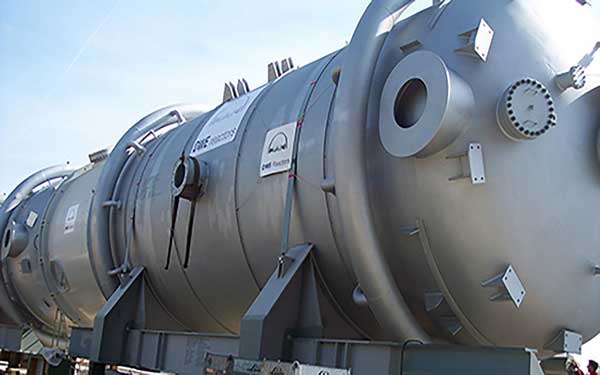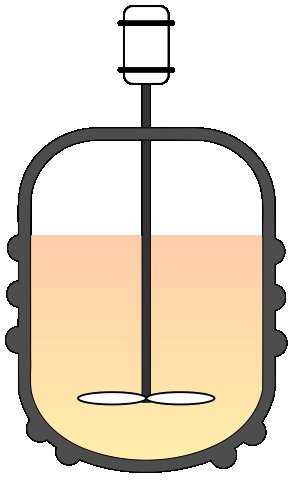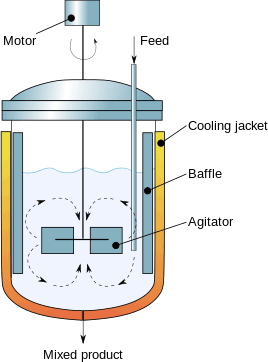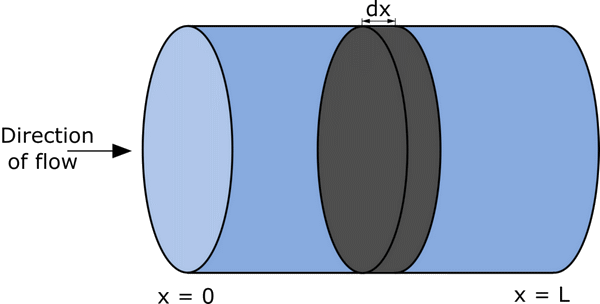 |
Industrial Reactor |
Reactors are ideal for a wide variety of fields, especially the chemical industry. Generally, reactors are vessels designed to contain chemical reactions of interest and industrial systems.
There are different types of reactors and different ways to classify them based on their intended application. They usually operate in a steady state, but can also operate in a transient state. There are three basic models used to estimate the main process variables of different chemical reactors: batch, continuous stirred tank or plug flow.
Reactors can also be classified according to the nature of the phases: homogeneous reactors with completely gaseous or liquid media, and heterogeneous reactors, where the reagents are in different combinations of phases: gas-liquid, gas-solid, liquid-solid and gas-liquid-solid.
They can be adiabatic and isothermal, with agitation systems and control of process variables (residence time, volume, temperature, pressure, concentration of chemicals and heat transfer coefficients).
 Image.. www.man-es.com
Image.. www.man-es.com
Batch Reactor
A batch reactor is the simplest type of reactor that consists of an agitator and a facility to apply utilities to heat or cool the reaction mass. This is a closed system in which there is no material flow entering or leaving the system. In the batch reactor, raw materials are loaded into the reactor and stirred.
The batch reactors are equipped with jackets in which we can install facilities to heat or cool the reaction mass, depending on the process requirements. These are typically used in the pharmaceutical industry and also prepare solutions, such as dosing chemicals. Batch reactors are used for chemical preparation, fermentation, crystallization, etc.

Batch reactor application - Batch reactors are used to prepare chemicals for dosing into the reaction. In the caustic chlorine industry, a batch of sodium sulfite is prepared and used for dosing into brine to remove free chlorine from the dichlorination drain.
Continuous stirred tank reactor
Continuous stirred tank reactor in another type of reactor also known as backmix reactor, mixed flow reactor (MFR), or continuous flow stirred tank reactor (CFSTR) is widely used in the chemical industry and has various applications. CSTR reactors are batch reactors with open systems and are equipped with an impeller to provide agitation for proper mixing or reactor content.
These reactors allow continuous addition of raw material to the reactor and continuous removal of product. A CSTR reactor is considered an idealized stirred tank reactor and is used to model the operating variables required to achieve a specified output.

PFR – Plug Flow reactor
PFR stands for Plug flow reactor and is also called continuous tube reactor (CTR). This is another type of reactor in which one or more chemicals are injected or pumped as a liquid through a tube or pipe. These reactor types are known as plug flow or tube reactors because this reactor has a tubular design and the reaction takes place.
The chemical reaction occurs as the reagents travel through the PFR. In this type of reactor, the changing reaction rate creates a gradient with respect to the distance traveled; at the inlet of the PFR, the rate is very high, but as the concentrations of the reagents decrease and the concentration of the product(s) increases, the reaction rate slows down.
